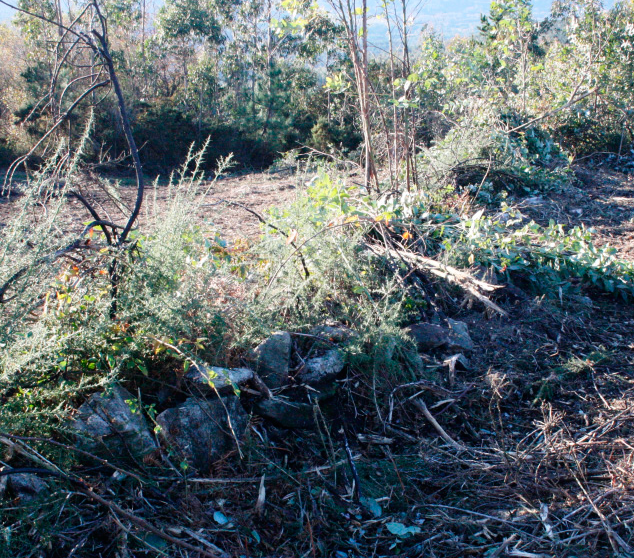Richard Grove et al., ‘Pastoral stone enclosures as biological cultural heritage: Galician and Cornish examples of community conservation’, Land 9.9 (2020)
This open access article introduces the relatively new concept of biological cultural heritage (BCH) and applies it to an area on the western slopes of Bodmin Moor and an upland community in the far west of Galicia. The notion of BCH adds the biological make-up to the more usual archaeological remains and built features that are seen as our cultural ‘heritage’.
Specifically, it uses Lady Down common, east of St Breward village, as a comparator for the experience of Frojam in Galicia. The recent histories of these two places differ considerably even though they both had long histories of pastoralism and similar geological and climatic contexts. They also both possess ancient stone walled enclosures. The built structures – the enclosure and Cornish hedges – are clearly elements of the local heritage, But, the authors argue, so is the semi-natural heathland and grassland habitat produced by centuries of livestock grazing.

The situation in Frojam is very different. There, traditional sheep pastoralism was disrupted in the 1940s when the Francoist state usurped the common land for a pine forest monoculture and abruptly ended centuries of pastoralism. Nonetheless, the villagers (who number only around 20) are now playing a key role in what is termed in Spain an Indigenous and Community Conserved Area. In these, local communities are encouraged to be involved and even drive conservation projects. The one in Frojam has begun to manage the enclosed area, where the survival of peaty grassland is evidence of the role of pastoralism in the past and a manifestation of biological cultural heritage. This is part of a network of self-managed common land projects in Galicia which are putting more emphasis on the preservation and restoration of BCH.
The section on Cornwall is used mainly as a contrast. Although major changes in agriculture and the conglomeration of farms took place here in the mid-twentieth century there was far less disruption to traditional grazing practices, which are controlled by local groups of commoners. There are some amusing speculative statements in the article about the cultural context. For example, it’s stated that St Bruwerd is the ‘Cornish form’ of St Breward. In fact, Bruwerd is merely a spelling variant and Breward is attested from as early as 1380, earlier than Bruwerd. Brown Willy is also supposed to originate in Bronn Ewhella. This is also nonsense.

Dodgy factual errors could have been avoided very quickly by consulting someone with local knowledge. That aside, the thrust of the article is, rather ironically, to encourage more awareness of traditional local knowledge and practices and more involvement of people in the management and conservation of their environment. Instead of ‘indigenous peoples and local communities’ and ‘traditional management practices’ being ignored and ‘considered mostly as passive recipients of restoration work’ in top-down projects, the authors call for their involvement as drivers of conservation and change. Although exactly who the ‘indigenous’ people of St Breward might be is not spelt out in the article.